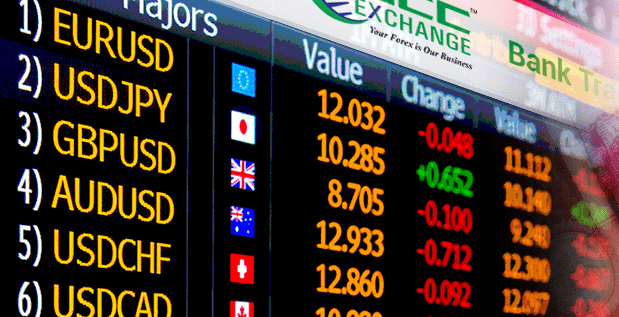
Dow points are units which represent changes in S&P Dow Jones Indices' collective value. One US dollars is equals one point. Dow points are up or down. They are not the same thing as basis points in bond or currency markets. If you want to know how to understand these terms, read on.
Dow points is a form shorthand that expresses changes in the total value of these indexes.
In stock market jargon, Dow points are a way to express changes in the collective value of stock indexes. Two such indexes are the Dow Jones industrial average (DJIA) and S&P 500 (S&P 500). On a recent day, the Dow Jones index rose from 13,000 to 13,001, or by one point. Contrary to other stock indexes however, Dow points are measured using whole numbers and disregard fractions after a decimal point. Accordingly, a change in the Dow points of a stock worth $10 may result in a 10% fall. When discussing changes to stock indexes it is more efficient to use percentages rather than points.
Points are useful in understanding the movement of stocks in the short-term. A drop in one share can have a dramatic impact on the Dow, especially if the market cap is low. IBM's share prices have increased by $5 for every five points of change.

These points are not equivalent to currency or bond basis point.
The term "basis points" is often confused with the terms "indexes," "bond prices," and "currency prices," but the terms are actually different. While index points measure performance of stock markets, they are distinct from currency or bond basis. The difference is that index point reflect changes in index component, and not the value of individual shares.
When comparing stocks, it's better to use percentage changes instead of points. This will allow you to compare apples to apples. For example, if a $10 stock drops by one point, it's a ten percent decline compared to a one percent drop in a $100 stock. It's easy to see why percentages are better to use when talking about stock indexes.
They can go up or down
The Dow Jones Industrial Average (or simply the Dow) is something you may have heard. This index represents 30 of America's most well-known companies. The Dow's points change depending on whether those companies have a good or poor day. It's important that you stay up-to-date with the Dow, as it has been volatile in the past.
Dow points are a convenient way to measure market movement, and they can be easily calculated. You can find the Dow point formula at the website of Dow Jones & Co.

They are calculated from S&P Dow Jones Indices
The Dow is an index of American companies, and each point represents one point in the score. The index's share prices are used to calculate points. This means that one stock's price can affect the company's total size. High-priced stocks can have a significant influence on the Dow Index, as it is based on share price.
The Dow index is made up 30 stocks. 500 stocks are included in the S&P 500 Index. The floating divisor divides the index's value and fluctuates to reflect stock splits, special dividends or spin-offs. Each point represents a different market value. This makes it easier compare stocks and indexes.
FAQ
How are securities traded?
The stock market lets investors purchase shares of companies for cash. Investors can purchase shares of companies to raise capital. Investors can then sell these shares back at the company if they feel the company is worth something.
Supply and demand are the main factors that determine the price of stocks on an open market. The price goes up when there are fewer sellers than buyers. Prices fall when there are many buyers.
There are two ways to trade stocks.
-
Directly from the company
-
Through a broker
What are the pros of investing through a Mutual Fund?
-
Low cost - Buying shares directly from a company can be expensive. It's cheaper to purchase shares through a mutual trust.
-
Diversification: Most mutual funds have a wide range of securities. The value of one security type will drop, while the value of others will rise.
-
Professional management – professional managers ensure that the fund only purchases securities that are suitable for its goals.
-
Liquidity is a mutual fund that gives you quick access to cash. You can withdraw the money whenever and wherever you want.
-
Tax efficiency – mutual funds are tax efficient. You don't need to worry about capital gains and losses until you sell your shares.
-
Buy and sell of shares are free from transaction costs.
-
Mutual funds are easy to use. You only need a bank account, and some money.
-
Flexibility: You can easily change your holdings without incurring additional charges.
-
Access to information - you can check out what is happening inside the fund and how well it performs.
-
You can ask questions of the fund manager and receive investment advice.
-
Security - know what kind of security your holdings are.
-
Control - you can control the way the fund makes its investment decisions.
-
Portfolio tracking - You can track the performance over time of your portfolio.
-
Easy withdrawal - it is easy to withdraw funds.
There are disadvantages to investing through mutual funds
-
Limited selection - A mutual fund may not offer every investment opportunity.
-
High expense ratio – Brokerage fees, administrative charges and operating costs are just a few of the expenses you will pay for owning a portion of a mutual trust fund. These expenses can reduce your return.
-
Insufficient liquidity - Many mutual funds don't accept deposits. They must only be purchased in cash. This limits your investment options.
-
Poor customer service. There is no one point that customers can contact to report problems with mutual funds. Instead, you must deal with the fund's salespeople, brokers, and administrators.
-
Rigorous - Insolvency of the fund could mean you lose everything
How can people lose their money in the stock exchange?
The stock exchange is not a place you can make money selling high and buying cheap. It's a place where you lose money by buying high and selling low.
The stock exchange is a great place to invest if you are open to taking on risks. They would like to purchase stocks at low prices, and then sell them at higher prices.
They hope to gain from the ups and downs of the market. But they need to be careful or they may lose all their investment.
Statistics
- Our focus on Main Street investors reflects the fact that American households own $38 trillion worth of equities, more than 59 percent of the U.S. equity market either directly or indirectly through mutual funds, retirement accounts, and other investments. (sec.gov)
- "If all of your money's in one stock, you could potentially lose 50% of it overnight," Moore says. (nerdwallet.com)
- Ratchet down that 10% if you don't yet have a healthy emergency fund and 10% to 15% of your income funneled into a retirement savings account. (nerdwallet.com)
- US resident who opens a new IBKR Pro individual or joint account receives a 0.25% rate reduction on margin loans. (nerdwallet.com)
External Links
How To
How to make a trading program
A trading plan helps you manage your money effectively. It allows you to understand how much money you have available and what your goals are.
Before you begin a trading account, you need to think about your goals. It may be to earn more, save money, or reduce your spending. You might want to invest your money in shares and bonds if it's saving you money. You can save interest by buying a house or opening a savings account. If you are looking to spend less, you might be tempted to take a vacation or purchase something for yourself.
Once you have an idea of your goals for your money, you can calculate how much money you will need to get there. This will depend on where and how much you have to start with. Consider how much income you have each month or week. Your income is the net amount of money you make after paying taxes.
Next, you will need to have enough money saved to pay for your expenses. These expenses include bills, rent and food as well as travel costs. All these things add up to your total monthly expenditure.
You'll also need to determine how much you still have at the end the month. This is your net available income.
Now you've got everything you need to work out how to use your money most efficiently.
To get started, you can download one on the internet. You could also ask someone who is familiar with investing to guide you in building one.
For example, here's a simple spreadsheet you can open in Microsoft Excel.
This is a summary of all your income so far. This includes your current bank balance, as well an investment portfolio.
Another example. This was created by an accountant.
This calculator will show you how to determine the risk you are willing to take.
Do not try to predict the future. Instead, put your focus on the present and how you can use it wisely.